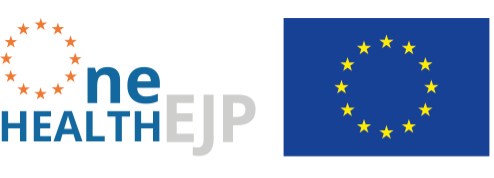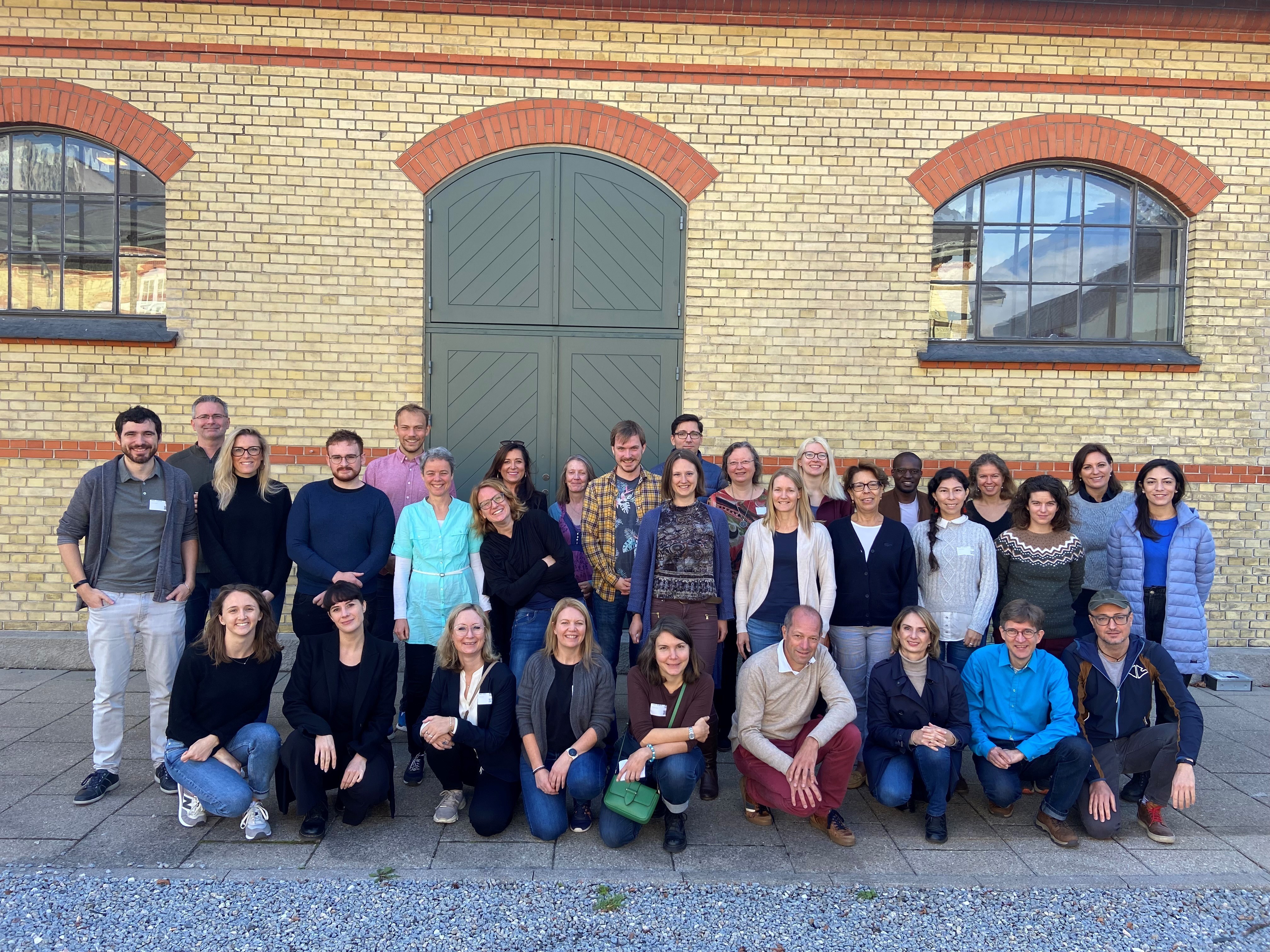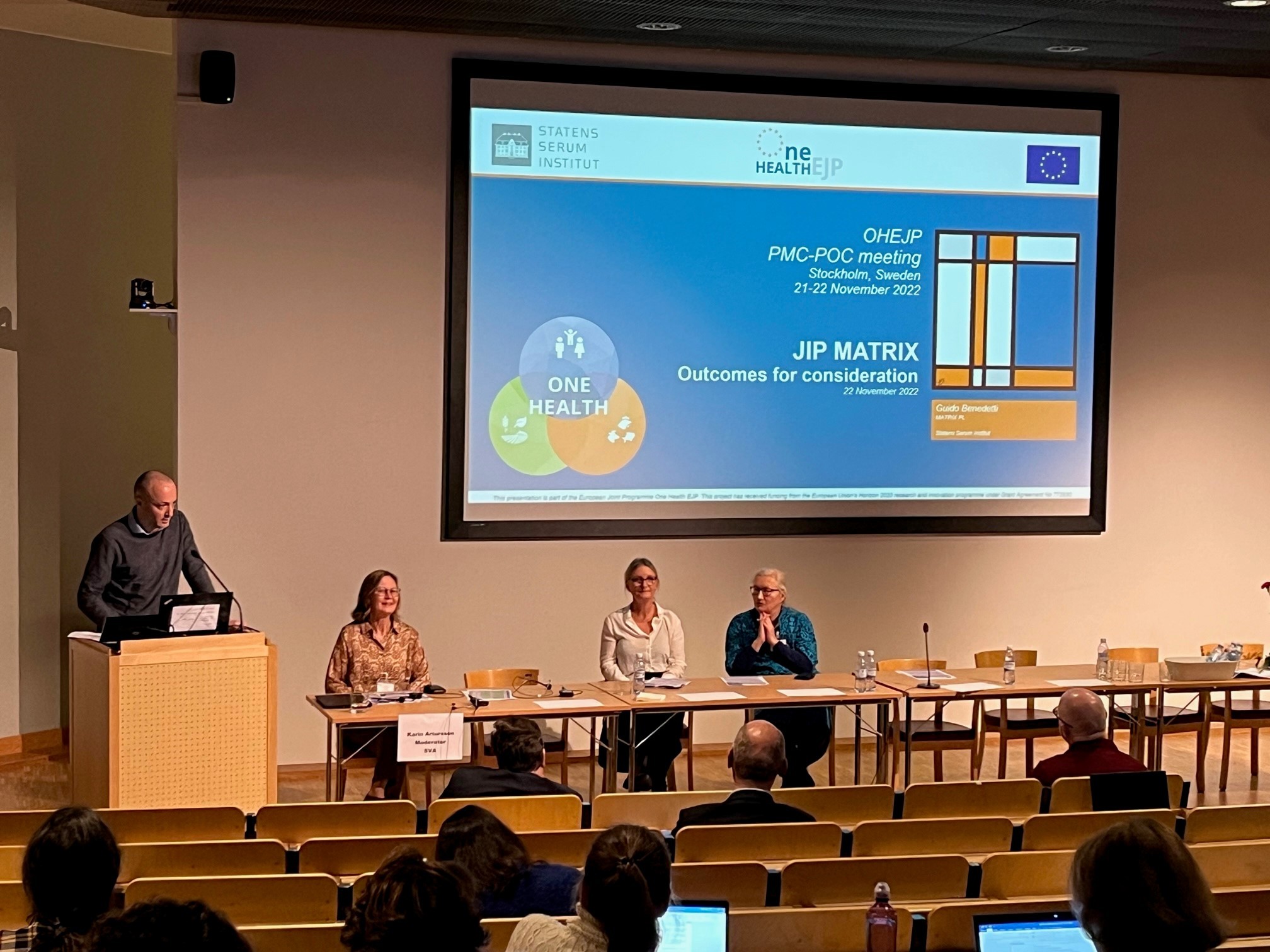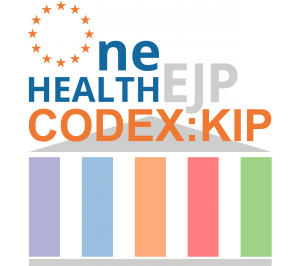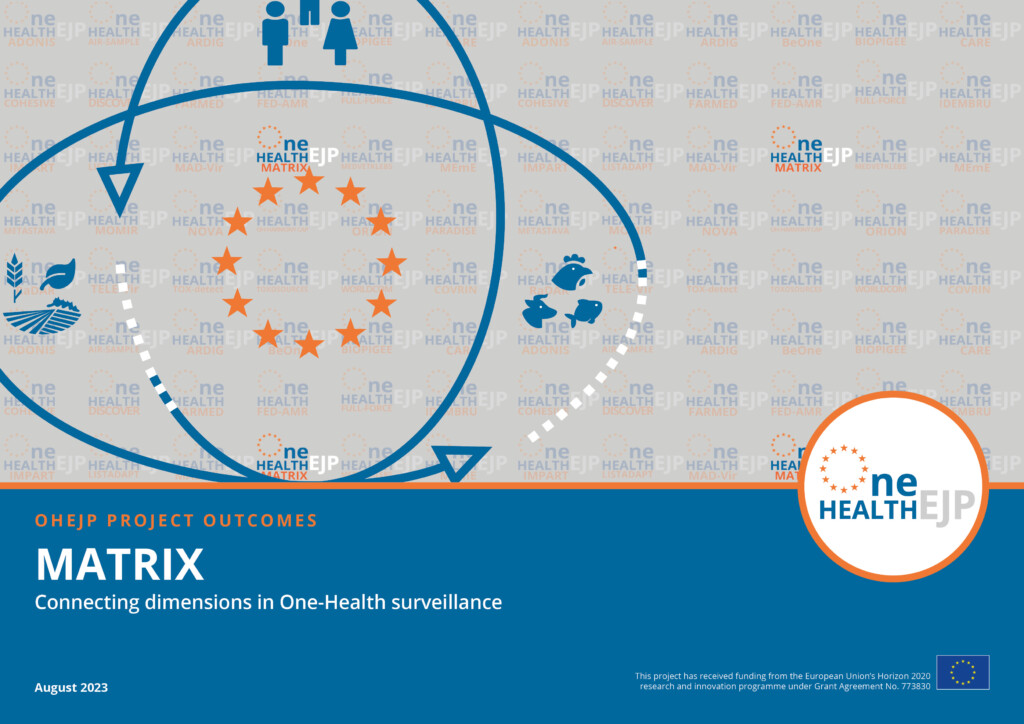Mustialankatu 3, Helsinki, Etelä-Suomi, Finland
Uppsala, Uppsala län, Sweden
Stockholm, Stockholms län, Sweden
Rua Rio Ave 1600, Carnide, Área Metropolitana de Lisboa, Portugal
Aleja Partyzantów 57, Puławy, województwo lubelskie, Poland
Ullevålsveien 68, Oslo, Oslo, Norway
Lovisenberggata 6, Oslo, Oslo, Norway
Houtribweg 39, Lelystad, Flevoland, The Netherlands
Antonie van Leeuwenhoeklaan 9, De Bilt, Utrecht, The Netherlands
Teramo, Abruzzo, Italy
Viale Regina Elena, Rome, Lazio, Italy
Daphne Jackson Road, Guildford, England, United Kingdom
Addlestone, England, United Kingdom
Madrid, Comunidad de Madrid, Spain
Südufer 10, Greifswald, Mecklenburg-Vorpommern, Germany
Max-Dohrn-Straße 8, Berlin, Berlin, Germany
14 Rue Pierre et Marie Curie, Maisons-Alfort, Île-de-France, France
Artillerivej 5, Copenhagen, Region Hovedstaden, Denmark
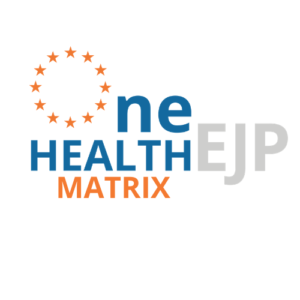
The Project #MATRIX
| Start: | 1 January 2020 |
| Duration: | 3 Years |
| Domain: | Integrative Activity |
| Keywords: | One-Health Surveillance, Cross-disciplinary, Multi-sectorial, Foodborne pathogens, Emerging threats |
| Contact: | Guido Benedetti (SSI) |
MATRIX: Connecting dimensions in One-Health surveillance
MATRIX was an EU-co-funded project within the framework of the One Health European Joint Programme. It aimed to advance the implementation of One Health Surveillance in European countries, by identifying and extending existing cross-sectoral programmes including animal health, public health and food safety. By the end of 2022, 19 partner institutes from 12 European countries constituted the MATRIX Consortium.
Project Outputs, Outcomes and Impacts
MATRIX created solutions for European countries to support and advance the implementation of OHS, also known as the MATRIX Solutions for One Health Surveillance. They are:
- OH-EpiCap Tool – an interactive tool to evaluate the capacities and capabilities for the OHS of a hazard of choice, identifying strengths and opportunities for improvement. Additionally, the tool allows the benchmarking of surveillance capacities and capabilities for comparison. More information is available here: OH-EpiCap tool flyer and OH-EpiCap tool user guide.
- Roadmap to develop national OHS – a guideline that countries can use to develop OHS according to their needs and resources. The roadmap expanded the work of the OHEJP COHESIVE project and is available at https://www.ohras.eu/page/home – copy-paste this link in your browser.
- Manual for OHS Dashboards – an online dashboard inventory and practical manual to facilitate the design and implementation of OHS dashboards using open-source tools. More information is available here: Dashboard Information Centre.
- Guidelines and checklists:
- An interactive guide to facilitate the development of multi-sectoral OHS frameworks from existing animal health, public health and food safety surveillance systems. A beta version is available here.
- Best-practices to operationalize cross-sectoral collaborations with a focus on data collection, data sharing, data analysis, and the dissemination of surveillance results – available here.
- A guide to design, implement, and evaluate official controls within the food safety sector using output-based standards – available here.
MATRIX also promoted and expanded:
- The OHS Codex: The Knowledge Integration Platform – a framework to integrate various resources that help to implement OHS in all sectors.
- Food Safety Knowledge Exchange (FSKX) Format – a format that supports the One Health community in sharing and re-using mathematical models as well as data analysis procedures.
The problem-oriented approach of the project was reflected in the creation of hazard-specific tracks to ensure that the MATRIX Solutions for One Health Surveillance were relevant to specific pathogens. In actuality, MATRIX meant “a frame of solutions and hazards”. The hazards were chosen based on the operational priorities of MATRIX partner institutes and their One Health relevance. They were Listeria, Salmonella, Campylobacter and emerging threats, including antimicrobial resistance, viruses and parasites.
MATRIX invited European institutes working in the animal health, public health and food safety sectors to consider the opportunity to adopt these solutions and to further build upon them. In addition to the manifold initiatives that project partners and work package leaders took to further disseminate their work, the MATRIX Consortium organized and delivered a series of seven webinars, the Solutions for One Health Surveillance in Europe webinars in 2022, to present the project’s outcomes to a variety of stakeholders (briefing note available).
The MATRIX webinar about the One Health Surveillance CODEX: The Knowledge Integration Platform (OHS Codex/KIP) is available to watch as a video here.
The Project Impact Brochure is available on Zenodo.
Project Assets
Rodríguez, A., Sacristán, C., Iglesias, I. & de la Torre, A. (2023). Salmonella assessment along the Spanish food chain: Likelihood of Salmonella occurrence in poultry and pig products is maintained across the food chain stages. Zoonoses and Public Health. 00, 1–9. DOI: https://doi.org/10.1111/zph.13076
Rivers, S., Kochanowski, M., Stolarek, A., Ziętek-Barszcz, A., Horigan, V., Kent, A. J. & Dewar, R. (2023). A framework for the design, implementation, and evaluation of output based surveillance systems against zoonotic threats. Frontiers in Public Health. 11, 1129776. DOI: https://doi.org/10.3389/fpubh.2023.1129776
Amato, L., Benedetti, G., Di Giuseppe, P., Hénaux, V., Lailler, R., Nordeng, Z., Scharffenberg, T. A. Z., Skjerdal, T. & Cito, F. (2023). Mapping food surveillance chains through different sectors. Frontiers in Public Health. 11, 1129851. DOI: https://doi.org/10.3389/fpubh.2023.1129851
Rodríguez, A., Iglesias, I., de la Torre, A. (2022). Prioritisation tool for targeting the monitoring of veterinary pharmaceuticals in soils at national level: the case of Spain. European Journal soil sciences. 73(4), e13268. DOI: https://doi.org/10.1111/ejss.13268
Swanson, D., Koren, C., Hopp, P., Jonsson, M.E., Rø,G. I., White, R. A., Grøneng, G. M. (2022). A One Health real-time surveillance system for nowcasting Campylobacter gastrointestinal illness outbreaks, Norway, week 30 2010 to week 11 2022. Euro Surveillance. 27(43): 2101121. Available at: https://www.eurosurveillance.org/content/10.2807/1560-7917.ES.2022.27.43.2101121
Sundermann, E. M., Correia Carreira G., Käsbohrer, A. (2021). A FSKX compliant source attribution model for salmonellosis and a look at its major hidden pitfalls. Food Modelling Journal. 2: e70008. DOI: https://doi.org/10.3897/fmj.2.70008
Sundermann, E. M., Nauta, M., Swart, A. (2021). A ready-to-use dose-response model of Campylobacter jejuni implemented in the FSKX-standard. Food Modelling Journal. 2: e63309. DOI: https://doi.org/10.3897/fmj.2.63309
Tegegne HA, Freeth FTA, Bogaardt C, Taylor E, Reinhardt J, Collineau L, et al. Implementation of One Health surveillance systems: Opportunities and challenges – lessons learned from the OH-EpiCap application. One Health. 2024 Jun;18:100704. https://www.sciencedirect.com/science/article/pii/S2352771424000302?via%3Dihub
